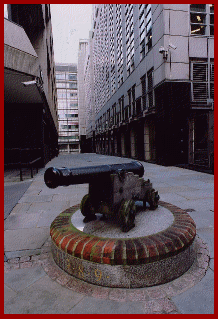| ||||||||||||||||||||||||||||||
Welcome to the | ||||||||||||||||||||||||||||||
 | ||||||||||||||||||||||||||||||
 | ||||||||||||||||||||||||||||||
Time Lapse, VCR's, DVR's, NVR's ... | ||||||||||||||||||||||||||||||
What sounds like a fairly simple procedure actually requires some seriously clever processing, to make sure that on replay, all the images are bright eyed and bushy tailed. Perhaps the biggest technological advantage of Digital recording, is that when you make copies of copies, in fact as many generations as you like, in theory there should'nt be any loss of quality throughout (unlike analogue which just continues to get worse with each attempt). And yet if you think about why CCTV pictures are recorded, they are generally only ever copied once if the authorities need their own working version of an Evidential Quality Recording. Now the main consideration with DVR's is that they are nearly always working as a compromise. Unlike S- VHS (for example) which is always recording at the same resolution (let’s say 400 lines Colour for arguments sake) the only thing that will vary is the number of images recorded each second, and that is in direct correlation to the speed which you set on the machine; so if you set it to record 24 hours on a single tape, it will record at a rate of just over 3 frames / sec. With a DVR, you can set the resolution and the number of images per second to be recorded, and then watch it fill up the recording medium accordingly. Whilst there are a very limited number of DVR’s that exploit tape or some other removable media, almost all DVR recorders are using high quality (and unfortunately in many cases, not so high quality!!) ‘hard discs’ as the primary storage for recordings, and normally these hard discs are locked away inside, and are not removable. If you want the machine to record at S-VHS resolution or higher, with a healthy number of images recorded per second, it’s going to need a chunk of hard disc space (perhaps a minimum120Gb) just to do the job for a resonable length of time. At present, there are a vast range of DVR machines, which fall into two main categories; 'Stand Alone' which are desktop boxes similar to a standard VCR, and 'PC Based' which as the name suggests are custom built computers fitted into standard PC cases. They generally vary in price from a few hundred, to a few thousand pounds and to be fair, each type has its own advantages and disadvantages. | ||||||||||||||||||||||||||||||
 | ||||||||||||||||||||||||||||||
IMPORTANT: No material may be reproduced, copied or redistributed from this site, © doktorjon.co.uk 2004 - 2008 Homepage...:...Gateway...:...Technical Gateway....:....Quickfind Index....:....Equipment Directory | ||||||||||||||||||||||||||||||

